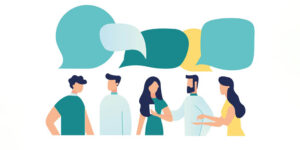Introduction
In the ever-evolving digital landscape, data privacy has become a paramount concern for both consumers and businesses. As we step into 2024, the terrain of data privacy regulations is undergoing significant transformations, posing new challenges and opportunities for marketers. In this blog post, we will delve into the changing landscape of data privacy and discuss how marketers can navigate these shifts while ensuring compliance and still delivering personalized experiences.
The Shifting Regulatory Landscape
Over the past few years, there has been a noticeable surge in data privacy regulations worldwide. Governments and regulatory bodies are taking decisive steps to empower users and protect their personal information. As a result, marketers are required to adapt to these changes and redefine their strategies to align with the evolving legal frameworks.
GDPR 2.0 and Beyond
The General Data Protection Regulation (GDPR) laid the foundation for stringent data protection standards. In 2024, we anticipate the introduction of GDPR 2.0 or similar updates in various regions, further emphasizing user rights, data transparency, and accountability. Marketers must stay vigilant about these updates to ensure their practices remain compliant.
Striking the Balance: Compliance vs. Personalization
While data privacy regulations are tightening, consumers still expect personalized experiences from brands. Striking the right balance between data privacy compliance and delivering tailored content is the key challenge for marketers.
User Consent and Transparency
One of the fundamental principles of data privacy is obtaining user consent. Marketers should prioritize transparent communication with users about the data collected and how it will be used. Implementing clear and easily accessible privacy policies can build trust and help users make informed decisions about sharing their information.
Data Minimization Strategies
In 2024, marketers need to adopt data minimization strategies. Instead of collecting vast amounts of data, focus on gathering only the essential information needed for personalized experiences. This not only reduces the risk of data breaches but also aligns with privacy-centric practices.
Technological Solutions for Data Privacy
In navigating the changing landscape of data privacy, marketers can leverage technological solutions to ensure compliance and enhance user protection.
Blockchain for Data Security
Blockchain technology is gaining prominence for its ability to provide a secure and transparent way to handle data. Marketers can explore blockchain solutions to enhance the security and traceability of user data, thereby building trust with their audience.
Advanced Encryption Techniques
Implementing advanced encryption techniques is crucial for protecting sensitive information. Marketers should invest in robust encryption protocols to safeguard user data during storage and transmission, reducing the risk of unauthorized access.
Education and Training for Marketing Teams
As the landscape of data privacy evolves, marketing teams need to stay informed and educated. Regular training sessions on the latest regulations, compliance best practices, and ethical data handling will empower marketers to make informed decisions and adapt swiftly to changes.
Conclusion
In 2024, data privacy is not just a legal requirement but a fundamental aspect of building and maintaining customer trust. Navigating the changing landscape requires a proactive approach, with marketers embracing a culture of privacy, transparency, and continuous adaptation. By prioritizing compliance, adopting innovative technologies, and educating their teams, marketers can not only meet regulatory expectations but also deliver the personalized experiences that consumers crave in a privacy-conscious era. The future of successful marketing lies in finding harmony between personalization and privacy, and those who navigate this landscape adeptly will undoubtedly stand out in the competitive digital marketplace of 2024.
To learn more or to acquire our services, please contact us at info@paypercampaign.com





